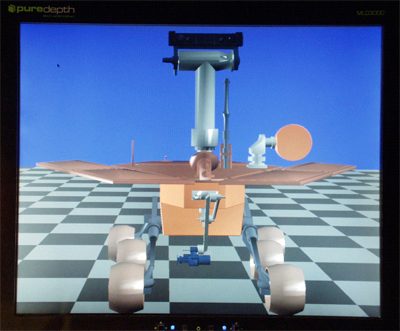Advances in the Dynallax Solid-State Dynamic Parallax Barrier Autostereoscopic Visualization Display System
May 1st, 2008
Categories: Devices, Software, Tele-Immersion, VR

Authors
Peterka, T., Kooima, R., Sandin, D., Johnson, A., Leigh, J., DeFanti, T.About
A solid-state dynamic parallax barrier autostereoscopic display mitigates some of the restrictions present in static barrier systems, such as fixed view-distance range, slow response to head movements, and fixed stereo operating mode. By dynamically varying barrier parameters in real time, viewers may move closer to the display and move faster laterally than with a static barrier system, and the display can switch between 3D and 2D modes by disabling the barrier on a per-pixel basis. Moreover, Dynallax can output four independent eye channels when two viewers are present, and both head-tracked viewers receive an independent pair of left-eye and right-eye perspective views based on their position in 3D space. The display device is constructed by using a dual-stacked LCD monitor where a dynamic barrier is rendered on the front display and a modulated virtual environment composed of two or four channels is rendered on the rear display. Dynallax was recently demonstrated in a small-scale head-tracked prototype system. This paper summarizes the concepts presented earlier, extends the discussion of various topics, and presents recent improvements to the system.
Keywords: Three-Dimensional Graphics and Realism, Three-dimensional displays
Resources
URL
Citation
Peterka, T., Kooima, R., Sandin, D., Johnson, A., Leigh, J., DeFanti, T., Advances in the Dynallax Solid-State Dynamic Parallax Barrier Autostereoscopic Visualization Display System, IEEE Transactions on Visualization and Computer Graphics, vol 14, no 3, ACM Portal, pp. 487-499, May 1st, 2008. http://doi.ieeecomputersociety.org/10.1109/TVCG.2007.70627